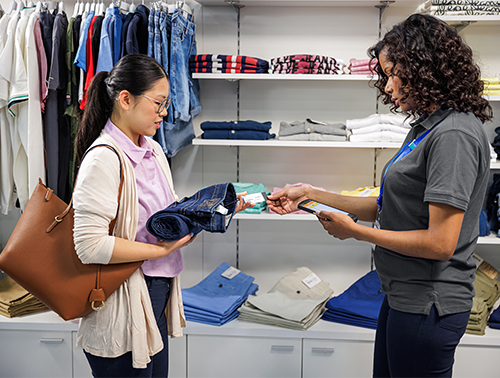How unified commerce can help retailers boost revenue by 16%
Every shopper interaction – from the busiest shopping moments of the year to special occasion gift giving – allows retailers to offer a personalized and rewarding experience.
Savvy retailers have begun recognizing they can positively impact their bottom line by merging their online and in-person shopping experiences. This is commonly known as “unified commerce,” and it’s a $1.5 trillion global opportunity for retailers.
According to Adyen's Retail Report, 42% of U.S. retailers invest in unified commerce, and the early results speak for themselves. For example, just last year, U.S. retailers that successfully connected their online and offline payments into a single platform witnessed an average 16% boost in revenue.
However, more than half of retailers (58%) still need to implement a unified shopping experience. They’re missing out on potential customers now, and risk losing future customers to other merchants that provide the seamless and personalized experiences today’s shoppers want.
What’s driving this trend? Shoppers continue to have less purchasing power due to rising costs, and their expectations of retailers have changed. They’re prioritizing value, affordability, and convenience.
Whether they buy a product in-store or online, today’s consumers expect merchants to know who they are, what they’ve purchased before, and their shopping preferences. In other words, they want a seamless and flexible omnichannel experience.
This is especially true during peak seasonal shopping moments when almost a third (31%) of shoppers look for discounts and nearly eight in 10 (78%) hunt for bargains across various channels.
By connecting their online and offline systems, merchants better understand what discounts to offer each customer, when precisely to provide them, and how to tailor them in a way that results in a sale. Most importantly, this approach delivers the personalized and customizable discounts shoppers want.
As merchants focus away from touchpoints and towards end-to-end engagements, retailers must be better equipped to meet customers everywhere along their purchase journey – from "just browsing" to final purchase.
As omnichannel commerce becomes more of the norm, an additional benefit is that consumers are broadening their shopping horizons. Adyen found that one in five shoppers seeks unique products unavailable from local stores and has purchased online from a non-U.S.-based retailer.
This trend underscores the need for merchants to offer payment flexibility and use trustworthy systems. Nearly one in four consumers (23%) said they'd only shop abroad if they could continue to use reliable payment methods. Retailers see promise in international expansion, with 68% of retailers planning to expand into new markets, especially France, Germany, China, and Canada, this year.
As cross-border commerce grows, online fraud remains a concern. Almost half (44%) of retailers have suffered significant losses from fraudulent transactions and chargebacks. Nearly a quarter of shoppers have experienced payments fraud over the past year, with an average loss of $242.
Investing in and prioritizing fraud prevention measures is one key to unlocking growth from unified commerce. More than half (51%) of merchants use AI to help detect and combat fraud, and 44% say they plan to grow their fraud and risk teams. Customers want to understand the steps taken to stop fraud, with 75% stating that retailers must communicate more effectively what fraud measures they implement.
The omnichannel commerce trend shows no sign of slowing down. By personalizing shoppers’ experiences, providing seamless consistency across physical and online channels, and ensuring customers’ preferred payments are universally accepted and protected from fraud, merchants will be well-positioned to grow their bottom lines.






